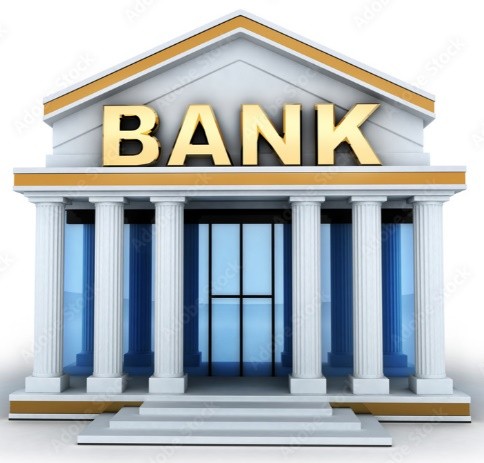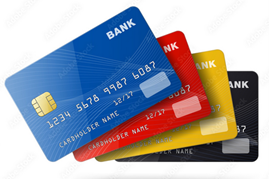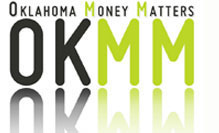Financial Literacy Standards
3.The functions and uses of banks and other financial service providers
Banks and other financial service providers help people and businesses manage their money. Here’s a simple look at what they do.

Section 1: Common Financial Service Providers
A. Types of financial services provided may include:
- Banks - Banks offer services like checking and savings accounts, credit cards, loans, and investments. Banks also provide technology like ATMs (cash machines), mobile apps, digital wallets, and online banking to make managing money easy.
- Credit Unions – Credit unions are like banks, but are owned by their members. They often have better interest rates and lower fees. Credit unions are insured by the National Credit Union Administration (NCUA), so your money is safe.
- Mortgage Companies - Mortgage companies help people secure loans to buy a home. They offer different types of mortgages to fit different needs.
- Brokerage Firms - These firms help you buy and sell financial assets, stocks, bonds, and other investments. They also give advice on how to grow your money.
- Finance Companies - These companies give out loans for things like buying a car. They focus on areas where banks might not offer services.
Section 2: Compare financial products and services
A. Types of financial services provided may include:
- Checking Accounts - Checking accounts let you easily access your money for everyday spending. They let you deposit, withdraw and manage your money effortlessly and quickly.
- Credit Cards - Credit cards let you borrow money up to a certain limit to buy things, and require that you pay it back - with interest.
- Savings Accounts - This type of bank account helps you save money and grow your money over time.
- Loans – A loan is an amount of money you borrow from a lender, like a bank or credit union, with the agreement to repay it over time, usually with interest.
- Investments - Investments include buying stocks, bonds, or real estate to grow your money over time.
- Insurance – Insurance is a financial product that protects you from unexpected financial loss due to accidents, health issues, or property damage.
- Contactless Payment Systems - These systems are technologies like digital wallets and mobile payment apps that allow quick and secure payments without cash or swiping a card. Instead, you just tap your card or phone near a payment terminal that supports contactless technology.
B. Consumer Banking Technologies
- ATM – Automated Teller Machines, or ATMs, provide 24/7 access to basic banking services such as cash withdrawals, deposits, balance inquiries and transfers between accounts. ATMs offer flexibility, allowing customers to perform monetary transactions outside of normal banking hours and locations.
- Mobile Banking Apps – These apps are designed for smartphones and tablets, offering most of the same functionality as online banking. Mobile apps provide easy and convenient access to banking services on the go, while also using security features, such as encryption, to keep your information safe.
- Digital Wallets – These are applications that securely store debit and credit card information on a device. They offer speed and convenience, allowing for quick and contactless payments with a few taps or clicks. Digital wallets reduce the need to carry physical cards or cash.
- Online Banking – Online banking allows customers to view account balances, transactions, download statements, pay bills, and transfer funds from anywhere with an internet connection.
C. Risks and Protections
- Checks – Checks are a common payment method, but they can be risky if lost or stolen. Fake checks have been known to be used in scams to steal money. You can purchase checks with security features and monitor your online bank account carefully.
- Debit Cards - Debit cards allow you to spend money directly from your bank account, but have risks of unauthorized transactions. If your card is lost or stolen, the culprit can use it to withdraw money or make purchases from your account. Debit cards are protected by PINs (Personal Identification Number) and fraud monitoring, and banks often detect and block your card’s use if suspicious activity is shown.
- Credit Cards – Credit cards are powerful financial tools, but can lead to debt if not managed well. Many have high interest rates and using your card extensively can lower your credit score. If your card is lost or stolen, you’re typically liable for up to $50 and some charges may be disputed.
- Online and Mobile Payment Systems – These types of payment systems include PayPal, Venmo, Cash App and Apple Pay. They let you send and receive money using your smartphone or computer, but scammers may trick you into sending money for fake products or services. Many offer encryption and security protocols, like two-factor authentication, instant notification or unusual account activity to catch fraud early.
D. Role of FDIC and NCUA
The Federal Deposit Insurance Corporation (FDIC) and the National Credit Union Administration (NCUA) are U.S. government agencies that protect your money in banks and credit unions. These organizations insure deposits up to a certain amount, so even if the bank or credit union fails, your money is safe.
Section 3: Banked vs. Unbanked Individuals
The terms Banked vs. Unbanked describe whether or not someone uses traditional financial services such as banks or credit unions.
- A “banked” person has a savings or checking account, may use online banking or credit cards, and can access loans or other financial services.
- An “unbanked” individual does not have a bank account at all. They may rely on cash or money orders to pay bills, or they may not qualify for banking services due to ID requirements or past financial issues.
Understanding these financial products and services helps you make smart decisions about your money and avoid problems like financial insecurity.


